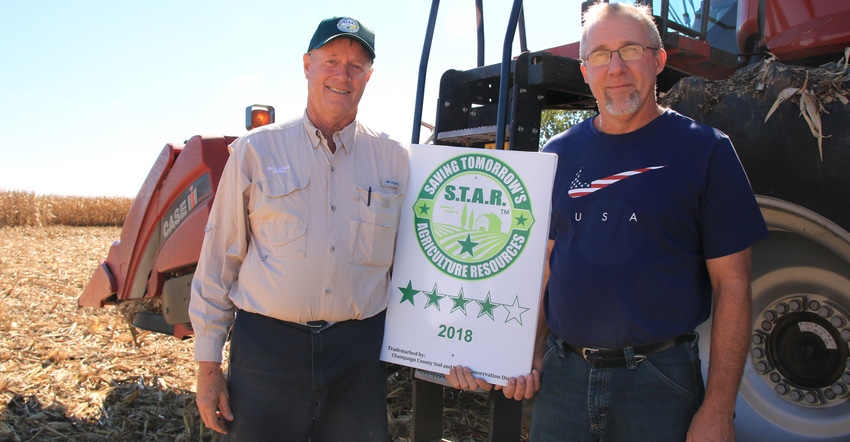
Sadorus, Ill., farmer Steve Stierwalt estimates 6% to 8% of farmers are using conservation techniques on a regular basis to improve soil health, while another 6% to 8% aren’t interested. In his mind, that means there’s a large group in the middle that could be persuaded to voluntarily pick up more conservation practices.
“How do you get to that big group in the middle to really affect water quality and all the rest?” asks Stierwalt, president of the Association of Illinois Soil and Water Conservation Districts. “The answer is some friendly competition.”
Stierwalt and others working with the Champaign County Soil and Water Conservation District are now in their second year of promoting conservation competition with the Saving Tomorrow’s Agriculture Resources program, or STAR. The program distributes conservation evaluation papers to SWCD offices throughout the state for farmers to fill out.
The free, five-minute form results in a 1 to 5 STAR rating for one field, which can then be commemorated with a sign that advertises the rating.
Nearly 80 farmers from 15 counties in Illinois participated in the program in its first year. More counties and farmers are signing up this fall for the program’s second year.
“This is not a cost-share program. We’ve had a lot of history with that, and once the cost-share money runs out, the practices seem to stop also,” says Joe Rothermel, chairman of the Champaign County SWCD. “This is a totally different approach.”
Farmers who dip their feet into conservation agriculture with a portion of their land are rewarded with a rating. When they receive it, they’re also shown SWCD-approved practices that can increase the rating. The more practices, the more stars — though the suite of approved options varies by region.
In the central region of Illinois where tile drainage is highly popular, nitrates are the target pollutant, and as such, overwintering cover crops are one of the best options.
“You get down south and phosphorus is the issue,” Rothermel says.
The program has worked with nine county Farm Bureaus in the Wabash River Valley to create a rating sheet for phosphorus.
“They’ve really grabbed onto this,” Rothermel concludes.
Generating value
The rating’s main value right now is that it helps farmers and landowners evaluate their operations, Stierwalt says.
“Landowners are interested in conservation, but they’ve never been empowered to be able to talk to their tenant about it. But with the STAR program or something like it, if they put in the contract that you need to at least be a 3-STAR farmer, there’s real power there,” he says.
Part of the plan is to eventually verify up to 10% of all Illinois fields in the STAR program. The hope is to also eventually add value to the rating from a sustainable food production standpoint.
“What if PepsiCo would say, we want our corn to be at least a 3-STAR, sustainably raised product? If there’s value there, we can furnish them with fields until they got to those 5 million bushels or however many they need,” Stierwalt says.
About the Author(s)
You May Also Like




